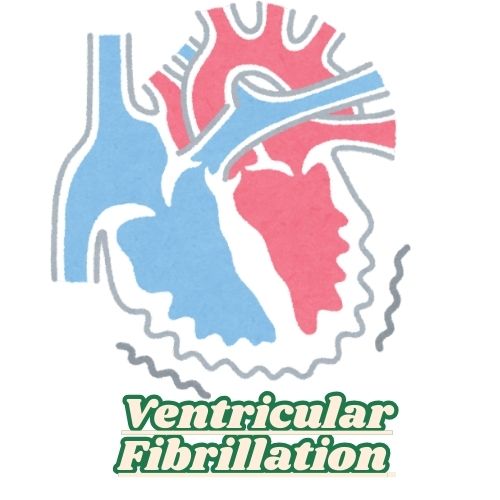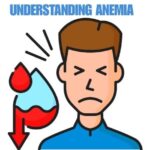What is Ventricular Fibrillation?
Ventricular fibrillation (VF) is a life-threatening heart rhythm disorder characterised by rapid, chaotic electrical activity in the ventricles, the heart’s lower chambers. Unlike normal heartbeats, which are organized and coordinated, VF causes the ventricles to quiver ineffectively, leading to a failure of the heart to pump blood. This results in a loss of consciousness and, if not treated immediately, can lead to death within minutes.
Causes of Ventricular Fibrillation
VF can be triggered by various underlying conditions and factors, including:
- Coronary Artery Disease: The most common cause of VF, where the arteries supplying blood to the heart become narrowed or blocked, leading to ischemia (reduced blood flow) and damage to the heart muscle.
- Myocardial Infarction (Heart Attack): A heart attack can lead to scarring of the heart muscle, which disrupts the normal electrical pathways, potentially resulting in VF.
- Cardiomyopathy: This refers to diseases of the heart muscle that can affect its structure and function, increasing the risk of arrhythmias, including VF.
- Electrolyte Imbalances: Abnormal levels of potassium, magnesium, and calcium in the blood can disrupt the electrical signaling in the heart, leading to VF.
- Congenital Heart Conditions: Some individuals are born with structural heart defects that can predispose them to VF.
- Severe Blood Loss or Shock: Conditions that severely reduce blood flow or oxygen delivery can trigger VF.
- Drug Overdose or Toxicity: Certain medications or recreational drugs can affect heart rhythm and lead to VF.
- Electrical Shock: Exposure to high-voltage electrical currents can disrupt the heart’s normal rhythm and lead to VF.
Symptoms of Ventricular Fibrillation
VF often leads to sudden cardiac arrest, and symptoms may occur rapidly. Common signs include:
- Sudden Loss of Consciousness: Patients typically collapse due to the lack of blood flow to the brain.
- No Pulse: The heart is unable to pump blood, resulting in no detectable pulse.
- Seizures: In some cases, individuals may experience convulsions due to lack of oxygen to the brain.
- Rapid Breathing or No Breathing: Breathing may become shallow, or the person may stop breathing entirely.
Because VF leads to unconsciousness very quickly, immediate action is critical.
Diagnosis of Ventricular Fibrillation
Diagnosis of VF is typically made in emergency situations. Key steps include:
- Electrocardiogram (ECG/EKG): VF is characterized by disorganized, irregular electrical activity on the ECG. The pattern will show no identifiable QRS complexes, indicating ineffective ventricular contractions.
- Physical Examination: Emergency medical personnel will assess the patient for signs of cardiac arrest, including unresponsiveness and absence of pulse.
- Advanced Cardiac Life Support (ACLS): In a clinical setting, healthcare providers will initiate ACLS protocols, which include immediate defibrillation if VF is confirmed.
what is the first line treatment for ventricular fibrillation
Immediate treatment is crucial for survival. Key interventions include:
- Cardiopulmonary Resuscitation (CPR): If a person is suspected of having VF, immediate CPR should be initiated to maintain blood flow to vital organs until advanced care can be provided.
- Defibrillation: The most effective treatment for VF is the use of an automated external defibrillator (AED) or manual defibrillator. This device delivers an electric shock to the heart, aiming to restore a normal rhythm.
- Advanced Cardiac Life Support (ACLS): After defibrillation, healthcare providers may use medications such as:
- Epinephrine: To enhance blood flow during CPR and increase the chances of successful defibrillation.
- Amiodarone: An antiarrhythmic medication that may be administered after defibrillation attempts to stabilize the heart’s rhythm.
- Post-Resuscitation Care: After successful defibrillation, the patient may require intensive monitoring and supportive care in a hospital setting, including:
- Coronary Angiography: To evaluate and treat any underlying coronary artery disease.
- Medications: Continued use of antiarrhythmic drugs and medications to support heart function.
- Implantable Cardioverter-Defibrillator (ICD): In patients at high risk for recurrent VF, an ICD may be implanted to monitor and automatically correct life-threatening arrhythmias.
Complications of Ventricular Fibrillation
If not promptly treated, VF can lead to several serious complications, including:
- Brain Damage: Prolonged lack of oxygen due to cardiac arrest can result in irreversible brain damage.
- Organ Failure: Inadequate blood flow can lead to failure of vital organs, including the kidneys and liver.
- Death: Without immediate intervention, VF is often fatal.
Prevention of Ventricular Fibrillation
Preventing ventricular fibrillation (VF) primarily involves managing underlying health conditions, adopting a heart-healthy lifestyle, and being aware of risk factors. Here are detailed strategies to reduce the risk of VF:
1. Manage Heart Disease
- Control Coronary Artery Disease:
- Regular Check-ups: Regular visits to a healthcare provider can help monitor and manage heart health.
- Medications: Use medications prescribed for lowering cholesterol, managing blood pressure, and preventing blood clots.
- Manage Hypertension:
- Monitor Blood Pressure: Regularly check your blood pressure and work with your doctor to keep it within a healthy range.
- Lifestyle Changes: Adopt a low-sodium diet, engage in regular physical activity, and manage stress to help control blood pressure.
- Heart Failure Management:
- Medications: Follow your healthcare provider’s recommendations regarding medications that help manage heart failure symptoms.
- Regular Monitoring: Keep track of weight and any changes in symptoms, reporting significant changes to your doctor promptly.
2. Electrolyte Balance
- Regular Blood Tests: If you have conditions that could affect your electrolyte levels (like kidney disease), regular blood tests can help monitor levels of potassium, magnesium, and calcium.
- Diet: Consume a balanced diet rich in fruits, vegetables, whole grains, and lean proteins to help maintain healthy electrolyte levels. Foods high in potassium (e.g., bananas, spinach) and magnesium (e.g., nuts, seeds) are particularly beneficial.
3. Lifestyle Modifications
- Healthy Diet:
- Heart-Healthy Eating: Emphasize whole foods, such as fruits, vegetables, whole grains, and healthy fats (like omega-3 fatty acids found in fish). Limit saturated fats, trans fats, and cholesterol.
- Limit Sugar and Salt: Reduce intake of added sugars and sodium to decrease the risk of obesity and hypertension.
- Regular Physical Activity:
- Exercise: Aim for at least 150 minutes of moderate aerobic activity or 75 minutes of vigorous activity per week, along with strength training exercises at least twice a week. Physical activity can help maintain a healthy weight and improve cardiovascular health.
- Weight Management:
- Maintain a Healthy Weight: Achieving and maintaining a healthy weight reduces strain on the heart and lowers the risk of heart disease.
- Quit Smoking:
- Tobacco Cessation: If you smoke, seek support to quit. Smoking is a significant risk factor for coronary artery disease and arrhythmias.
- Limit Alcohol:
- Moderation: If you drink alcohol, do so in moderation. Heavy drinking can increase the risk of arrhythmias.
4. Avoid Stimulants
- Limit Caffeine: For some individuals, excessive caffeine intake may trigger arrhythmias. Monitor your response to caffeine and adjust accordingly.
- Avoid Recreational Drugs: Stay away from stimulants, such as cocaine and amphetamines, which can disrupt normal heart rhythm and lead to VF.
5. Regular Health Screenings
- Comprehensive Health Checks: Regular health screenings can help identify risk factors for heart disease early, allowing for timely intervention. This includes monitoring blood pressure, cholesterol levels, and glucose levels.
- Family History: Be aware of your family history of heart disease or arrhythmias and discuss this with your healthcare provider, as genetic factors can influence your risk.
6. Emergency Preparedness
- Know CPR: Learning cardiopulmonary resuscitation (CPR) can be life-saving in the event of sudden cardiac arrest. Many organizations offer CPR courses.
- Access to AEDs: Familiarize yourself with the locations of automated external defibrillators (AEDs) in your community. Knowing how to use an AED can greatly increase survival chances during a cardiac emergency.
7. Post-Cardiac Event Care
- Follow-Up Care: After experiencing a heart event (like a heart attack), adhere to your healthcare provider’s recommendations for follow-up appointments and lifestyle changes.
- Cardiac Rehabilitation: Participating in a supervised cardiac rehabilitation program can provide support and education on lifestyle changes to reduce the risk of future events.
Preventing ventricular fibrillation involves a proactive approach to heart health, focusing on managing existing conditions, making lifestyle changes, and being prepared for emergencies. By adopting a heart-healthy lifestyle, maintaining regular check-ups, and being aware of personal risk factors, individuals can significantly reduce their risk of VF and improve their overall cardiovascular health. If you have any concerns about your heart health, consulting with a healthcare professional is essential for personalized advice and management.

Ventricular fibrillation is a critical medical emergency that requires immediate intervention to prevent death. Understanding its causes, symptoms, and treatment options is essential for timely action. If you witness someone experiencing sudden loss of consciousness or other symptoms of cardiac arrest, call emergency services and initiate CPR immediately. With prompt treatment, the chances of survival and recovery can significantly improve. If you have risk factors for heart disease, it’s important to work with a healthcare provider to manage your health and reduce the risk of arrhythmias like VF.
More same topics? click here







